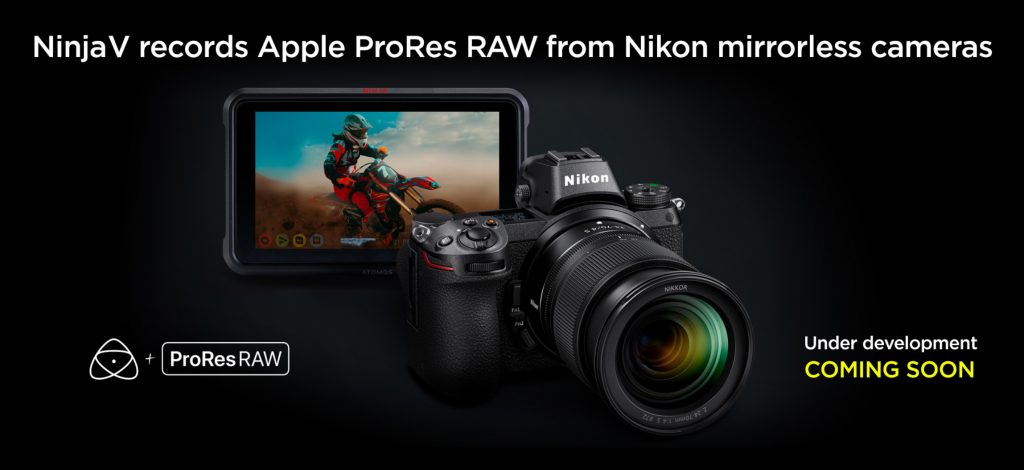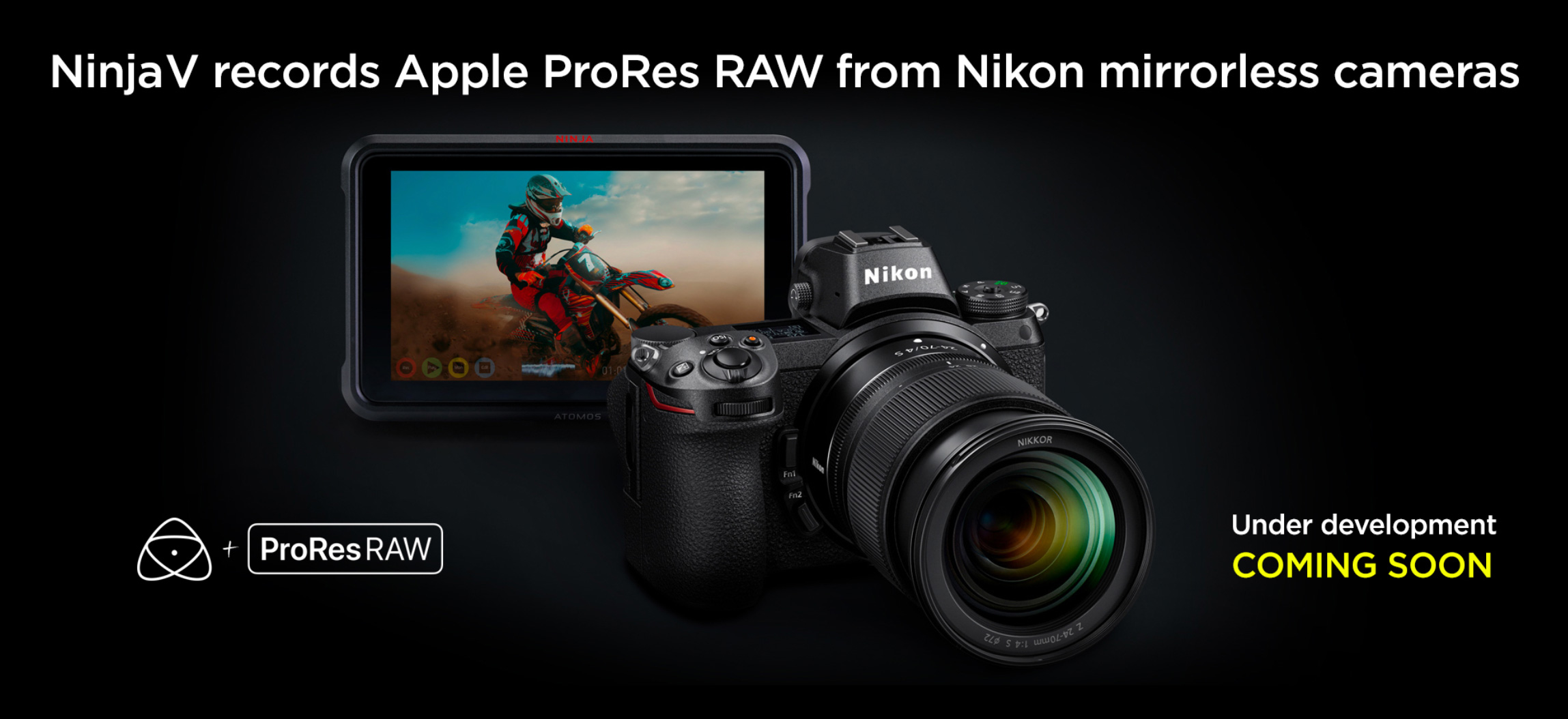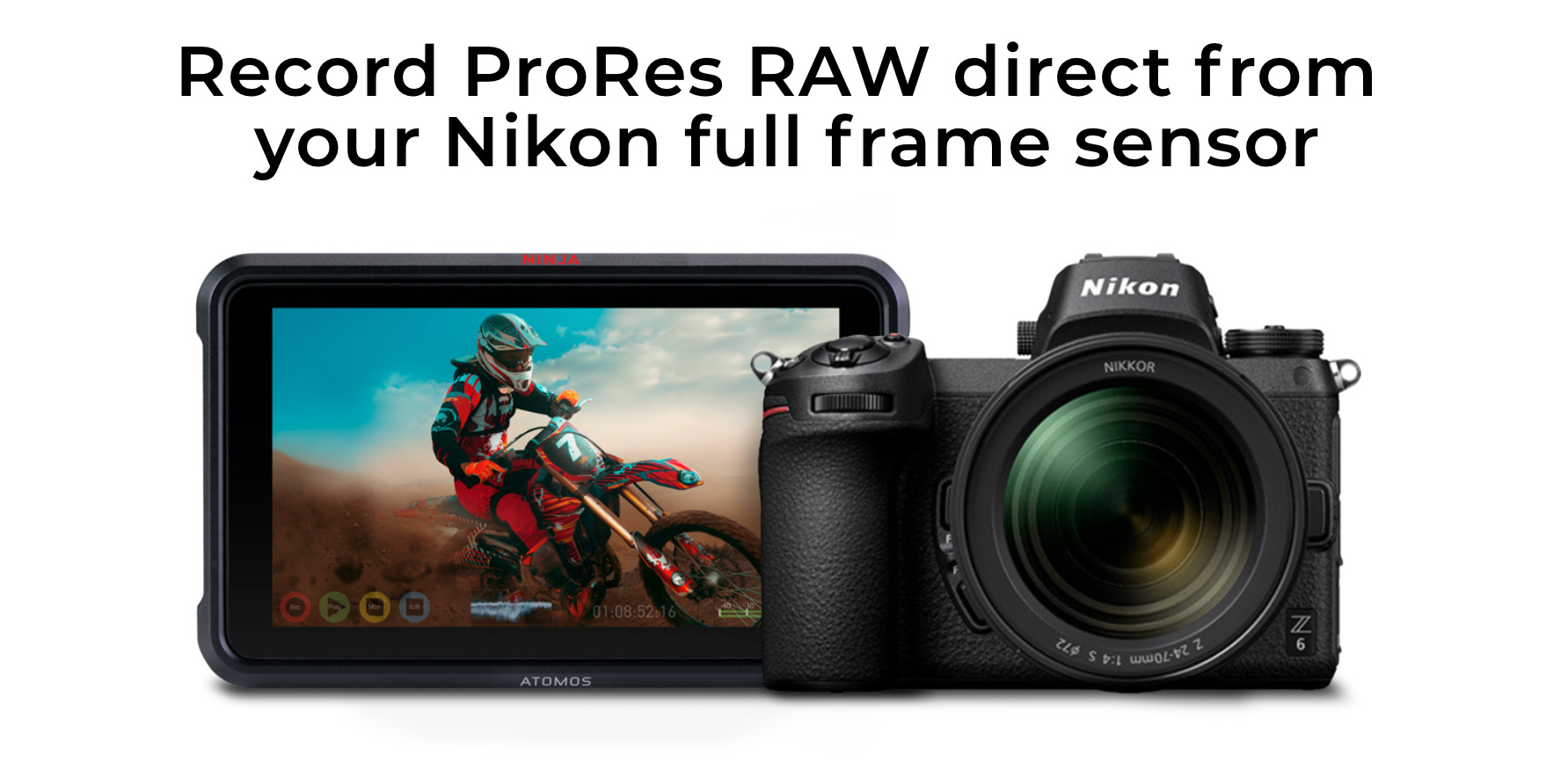
This is a really surprising by Nikon, as I expected Sony or Panasonic to do this first. Nevertheless the Z6 and Z7 will be the first mirrorless cameras to offer 4K RAW via HDMI to an external recorder – namely the Atomos Ninja V.
Jeromy Young at Atomos must be one persuasive genius because this is going to be a firmware update from Nikon I never expected to see. I crossed paths with Jeromy (and Dan Chung, now of Atomos) at Photokina and saw him go into a meeting with Canon as well – so make of that what you will?! 😉
There is clearly a good dialogue going on and I expect RAW outputs to be a thing on quite a lot of cameras in 2019. There’s a rumour that the Panasonic S1 and S1R will do it and the Blackmagic Pocket Cinema Camera 4K already does offer a RAW output via USB C (as well as internally).
I had expected USB C to be the data connection of choice for 4K RAW on small cameras but it appears Nikon is packing the data up and sending it over HDMI. Well, whatever works, but as the Z6 and Z7 have USB C I’d have preferred to see RAW going out over that. USB C is a more modern data standard and stuff can go straight onto a USB C drive like the Samsung T5 SSD. Again Blackmagic are pioneers on that front.
The RAW output coming to the Nikon Z series is true RAW sensor data, not debayered, no codec. The Atomos Ninja V then applies the ProRes RAW magic to that basic image data. Although the codec is applied on the Ninja V, the processor intensive debayering is apparently done on your computer, so it will be interesting to see what playback and editing performance people will experience with it. If your NLE does not smoothly hardware accelerate ProRes RAW, you might have to transcode to 10bit LOG ProRes which will negate some of the flexibility of RAW but still result in a nice image quality increase from the internal H.264 codec or standard YUV HDMI output. I expect Resolve and FCPX to work best with ProRes RAW. Adobe are a laugh a minute at the moment and not in a good way.
What does the future hold?
Well, I can clearly see ProRes RAW and Blackmagic RAW taking over from the older and more space hungry RAW formats like Cinema DNG or uncompressed RAW. It remains to be seen which comes out top dog technically and which has the most broad support on external recorders, in cameras and in NLEs. It’s not always the technically superior product that wins! We’ve also yet to see Sony’s answer to RAW in the rumoured XEVC 8K codec, which uses H.265 compression to store RAW RGB data.
3 different manufacturers – 3 different codecs. Oh dear!
Nikon and Atomos are to share full details of the Z6 and Z7’s ProRes RAW capabilities at a later date, probably no later than NAB in April.
Panasonic meanwhile have kept the detailed video specs of the S1 and S1R a closely guarded secret so far, but at the end of January there is a major press event which I am invited to in Barcelona. I am not under NDA and haven’t been told anything about what will be revealed there. What I am sure of is there will be more information than CES where Panasonic announced just 2 more features – albeit very innovative ones like an HDR file standard for stills. So still in the dark regarding video but 99% sure we will see more video specs by the end of this month and 98% sure amongst those specs will be some form of RAW output via either HDMI or USB C. If not then I will complain and tell them to add it!!
In the external recorder world Atomos have positioned themselves as the go-to provider for ProRes RAW capable recorders. Convergent Design don’t seem to be pushing in this area. I’d like to see a bit more competition because it looks like Jeromy has things sown up and deservedly so! Would be nice to see an offering from SmallHD as well!
Meanwhile Blackmagic hold one major trump-card. BRAW will be internal, not just external. I am chomping at the bit to see this on the affordable Pocket 4K, partly because the major manufacturers still haven’t addressed the ergonomic problems of the HDMI cable. It’s not hard! Route the connection up through a smart-shoe or integrate a cable in a way that doesn’t loop sideways out of the body from a small wobbly port. Once this is fixed, I’d have no hesitation with recommending external recorders.






